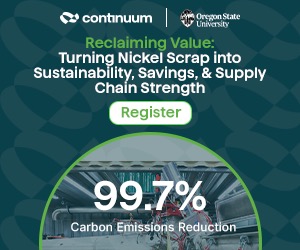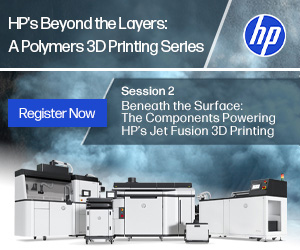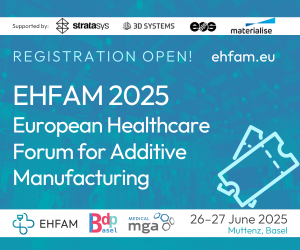“Women who survive breast cancer are often left with inadequate reconstruction choices—synthetic implants that can fail, cause additional cancers and leave them in constant discomfort; or complex surgeries that can result in more complications. It’s as if they’ve been overlooked, an underserved part of society left without the solutions they deserve,” says Luba Perry, the driving force behind ReConstruct Bio, a new company in the process of spinning out of the Wyss Institute at Harvard University. “We’re here to change that.”
 Inside the cutting-edge laboratories of the Wyss Institute, I witnessed firsthand the innovative work Perry, a Wyss Senior Scientist, and her team are doing to make this change a reality. As I stood behind the scenes with Perry, she showed me a small piece of 3D printed tissue designed to provide breast cancer survivors with a more natural and permanent reconstruction option. It was a glimpse into a future where survivors no longer have to settle for inferior solutions.
Inside the cutting-edge laboratories of the Wyss Institute, I witnessed firsthand the innovative work Perry, a Wyss Senior Scientist, and her team are doing to make this change a reality. As I stood behind the scenes with Perry, she showed me a small piece of 3D printed tissue designed to provide breast cancer survivors with a more natural and permanent reconstruction option. It was a glimpse into a future where survivors no longer have to settle for inferior solutions.
The ReConstruct Bio team is pushing the boundaries of what’s possible in breast reconstruction. By pioneering the creation of vascularized tissue using a patient’s own cells, Perry and her team are offering a solution that could revolutionize care for breast cancer survivors. This cutting-edge technology promises to transform the lives of millions, providing a natural and lasting alternative to existing options.
From Lab to Life: ReConstruct’s Journey
ReConstruct’s new approach tackles the significant drawbacks of current breast reconstruction options. Traditional artificial implants come with many health risks, like needing frequent replacement and even causing additional cancers. Even using a patient’s own tissue, a technique called autologous tissue flaps, which seems like a better and more natural alternative, has its complications, as they often require complicated surgeries and long recovery times.
Faced with these limited and challenging options, many women choose to forgo reconstruction altogether, opting instead to “go flat” rather than endure the risks and complications associated with current procedures. But the ReConstruct Bio team is changing that. They are developing an engineered tissue flap called the BioImplant, using a special bioprinting method known as sacrificial writing in functional tissue (SWIFT). This method helps the team print fat tissue with blood vessels that can easily be integrated into a patient’s body.
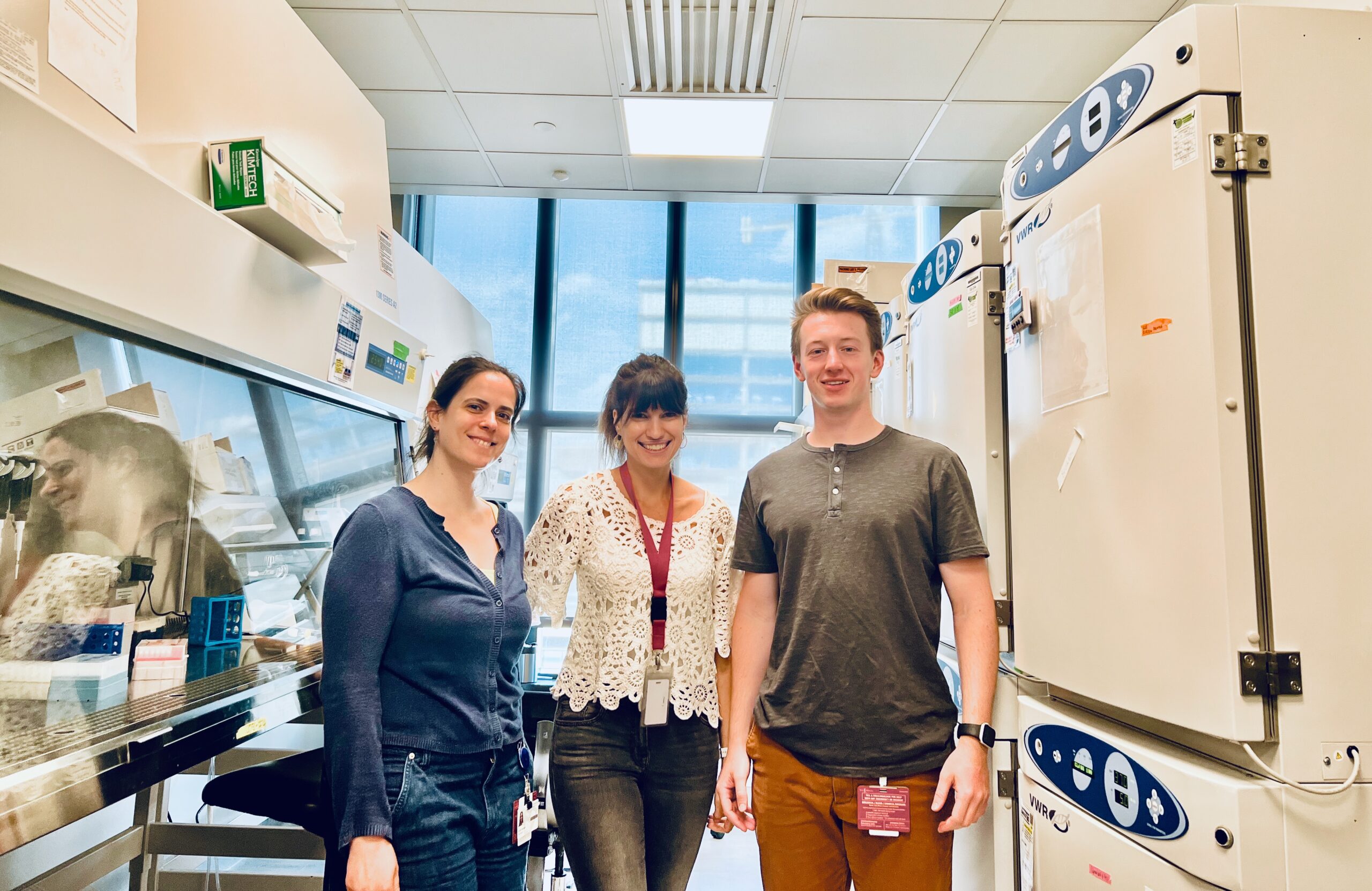
ReConstruct founder and CEO Luba Perry with Gozde Basara and Daniel Ludwiszewski at the Wyss Institute’s lab. Image courtesy of 3DPrint.com.
During my visit to the Wyss Institute, I got a behind-the-scenes look at the lab where Perry and her team are working on this groundbreaking technology. The Wyss Institute itself is an incredible place, alive with innovation and cutting-edge research across so many disciplines. With over 58 startups spun out from its labs in 15 years, the Institute is a powerhouse of innovation. Plus, that atmosphere of creativity and collaboration has clearly played a role in encouraging projects like ReConstruct, giving them the resources and support needed to take ambitious ideas from bench to bedside.
I witnessed firsthand the tissue with microchannels, part of small animal trials. The experience was eye-opening and highlighted the incredible potential of this technology.
In an interview, Perry emphasized that ReConstruct Bio is seeking funding to officially spin out of the Wyss and advance to large animal studies, a critical step before moving into clinical trials.
“We need that early-stage investor who really cares about women’s health,” Perry said, stressing the importance of finding partners who understand the impact this technology could have.
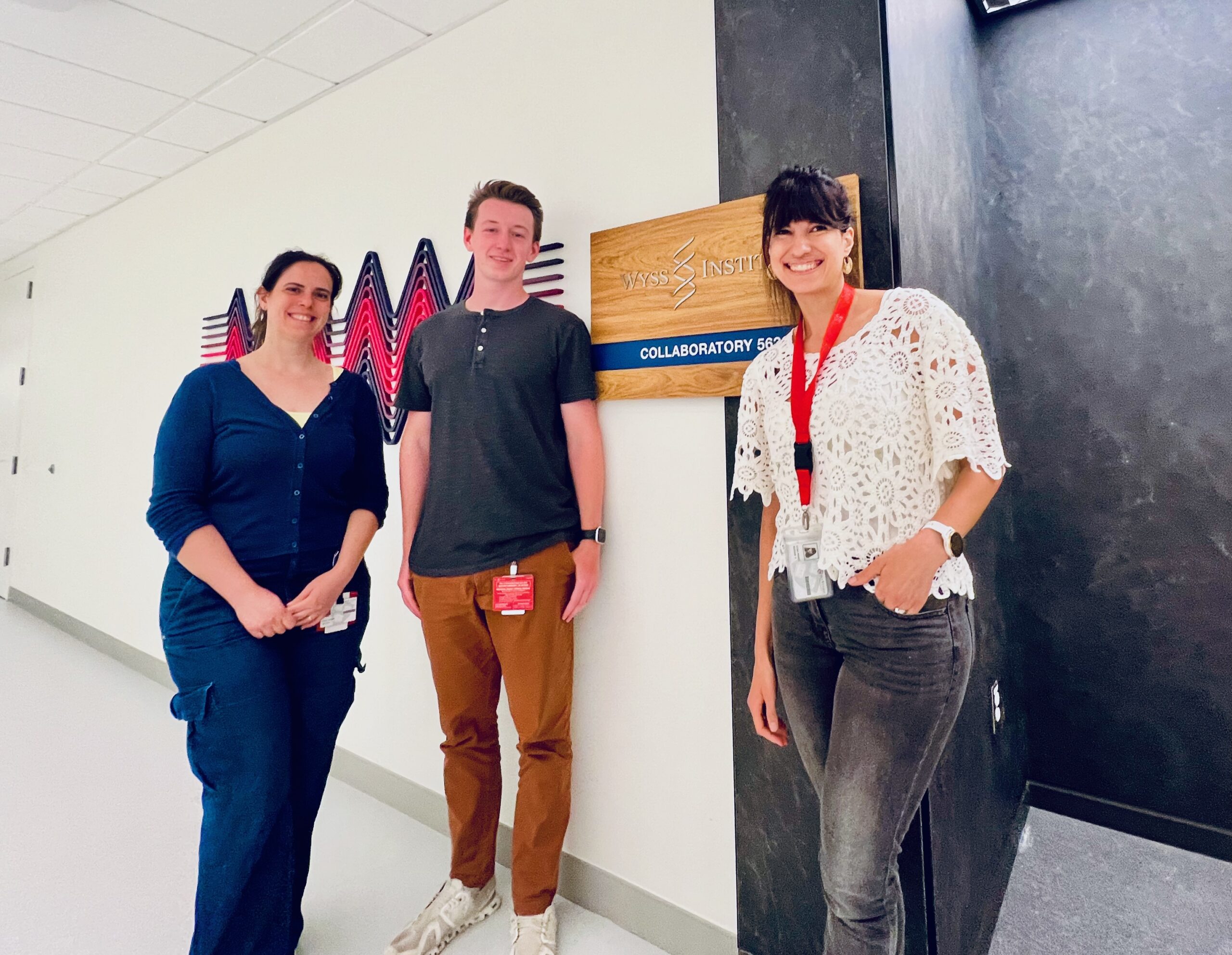
ReConstruct founder and CEO Luba Perry with Gozde Basara and Daniel Ludwiszewski at the Wyss Institute. Image courtesy of 3DPrint.com.
Listening to Patients: Shaping the Future of Reconstruction
ReConstruct Bio began as a collaborative effort between renowned Wyss Faculty members Jennifer Lewis and Christopher Chen, with Perry at the helm as the project leader. Initially, the technology was aimed at cardiac applications, but Perry’s conversations with surgeons and patients revealed the immense need for better breast reconstruction options. This feedback shifted the focus of ReConstruct Bio to check the unmet needs of breast cancer survivors. Among those she consulted was Dr. Samuel Lin, an Associate Professor of Surgery at Harvard Medical School and a breast reconstruction expert, who soon joined the ReConstruct Bio team.
“Today, the team’s goal is to provide a safer, more effective alternative to artificial implants for breast reconstruction and augmentation.”
Perry, who has extensive experience in vascular engineering and animal studies, was a natural fit to lead this initiative. Her expertise goes far beyond typical scientific research; she possesses an extraordinary skill set in microsurgery, a rare ability perfected over a decade of dedicated practice. Perry performs the delicate task of suturing vessels as small as 0.8 millimeters in diameter under a microscope, about the size of a fine needle or the thickness of a grain of sand. This feat requires “unwavering focus and exceptionally steady hands,” she explains.
As she prepares to step into the role of CEO once the company spins out, Perry is already deeply involved in fundraising, managing the finances and daily business operations. Yet, she remains deeply connected to the lab, continuing to perform these intricate surgeries herself, showing her deep-rooted commitment to the science at the heart of her work.

A microscopy image of vascular channels within adipose tissue that was bio-printed and perfused in vitro for a duration of four days. Image courtesy of Wyss Institute at Harvard University.
Navigating Challenges: A Female Founder’s Perspective
Before her time in Boston, Perry conducted her PhD in the lab of Prof. Shulamit Levenberg at the Technion, the Israel Institute of Technology, where she conducted pioneering research on vascularizing skeletal muscle. Her work on skeletal muscle was particularly novel and even extended into the early development of cultured meat, a field that has since gained significant traction. Perry also brings industry experience, having worked at a vascular gene therapy company where she contributed to developing a biosynthetic graft for dialysis patients, which is currently advancing through a Phase I clinical study.
Perry’s journey with ReConstruct Bio began after joining the Wyss Institute as a postdoctoral research fellow, leading to her promotion to senior staff scientist in 2021. Now, as she prepares to take on the role of CEO of ReConstruct Bio, Perry blends her scientific expertise with a newly found entrepreneurial drive needed to push her technology forward.
“Science is my comfort zone, but this is so new, and there are many things to learn. Every day, I’m pushing my boundaries and learning more than I ever imagined,” she shared.
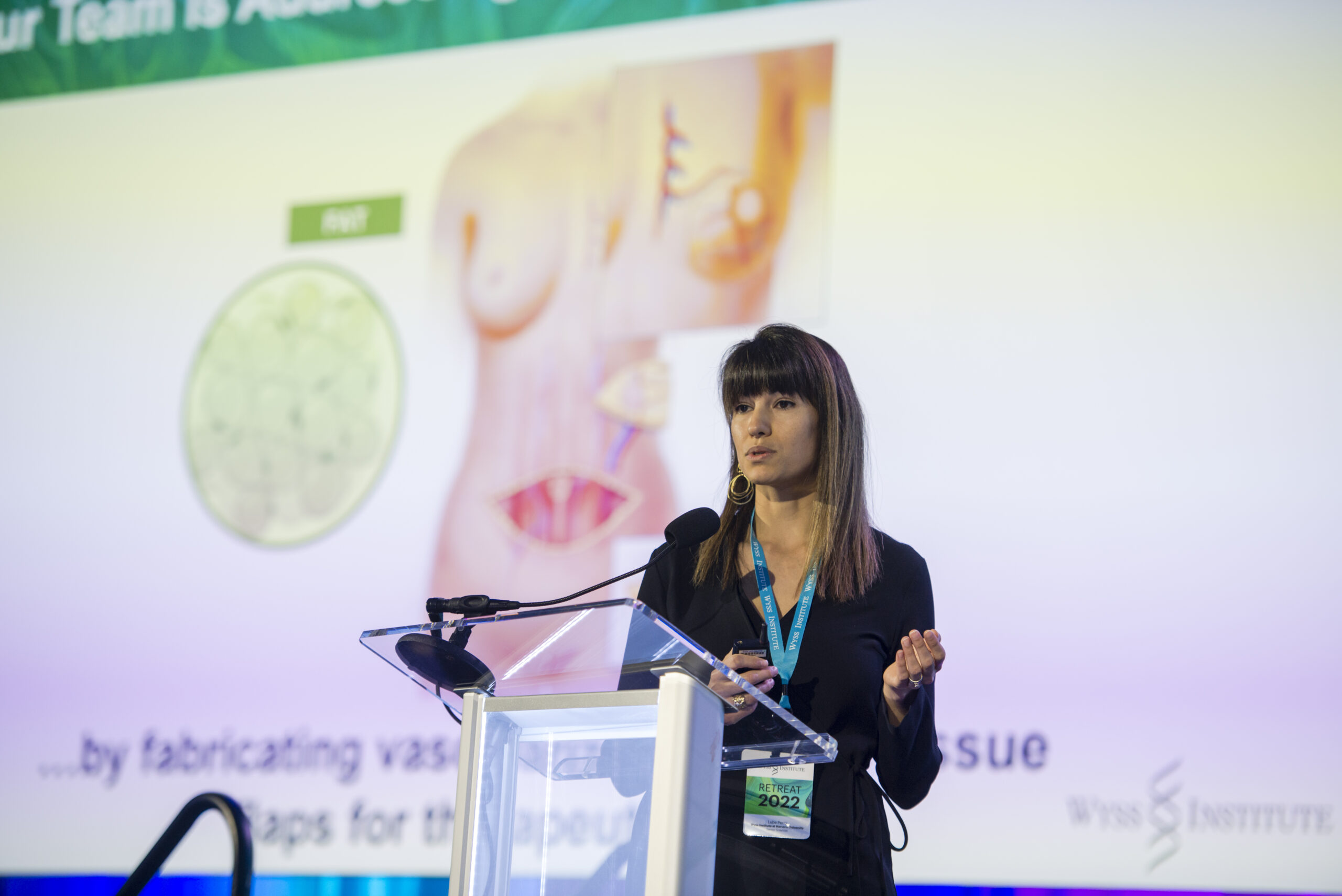
Luba Perry discusses the challenges of current breast reconstruction options and how ReConstruct can change the standard of care for patients around the world. Image courtesy of Wyss Institute at Harvard University.
As a female founder in the women’s health space, Perry says she faces unique challenges, but she thinks of her role “as part of a broader fight for better recognition and treatment options for women. The market is generally hard, but women’s health is even harder.”
What’s more, the Wyss Institute’s internal funding and support played a key role in helping ReConstruct’s progress. This institutional backing gave Perry and her team the resources needed to validate their technology in a small animal model before seeking external funding, highlighting the importance of strong institutional support for innovative projects.
Beyond Breast Reconstruction: The Broader Implications
“The challenges of fabricating vascularized tissue are immense,” remarks Perry, but her team has made quite the progress. They have developed a method to create dense adipose tissue composed of personalized organ building blocks (OBBs), pattern a network of interconnected channels that serve as blood vessels, and incorporate suturable cuffs to ensure the implanted tissue integrates seamlessly with a patient’s vascular system. This technology “is not just theoretical,” as Perry points out; the team has successfully validated it in small animal models, showing that the implanted tissues stay viable and well-perfused with blood.
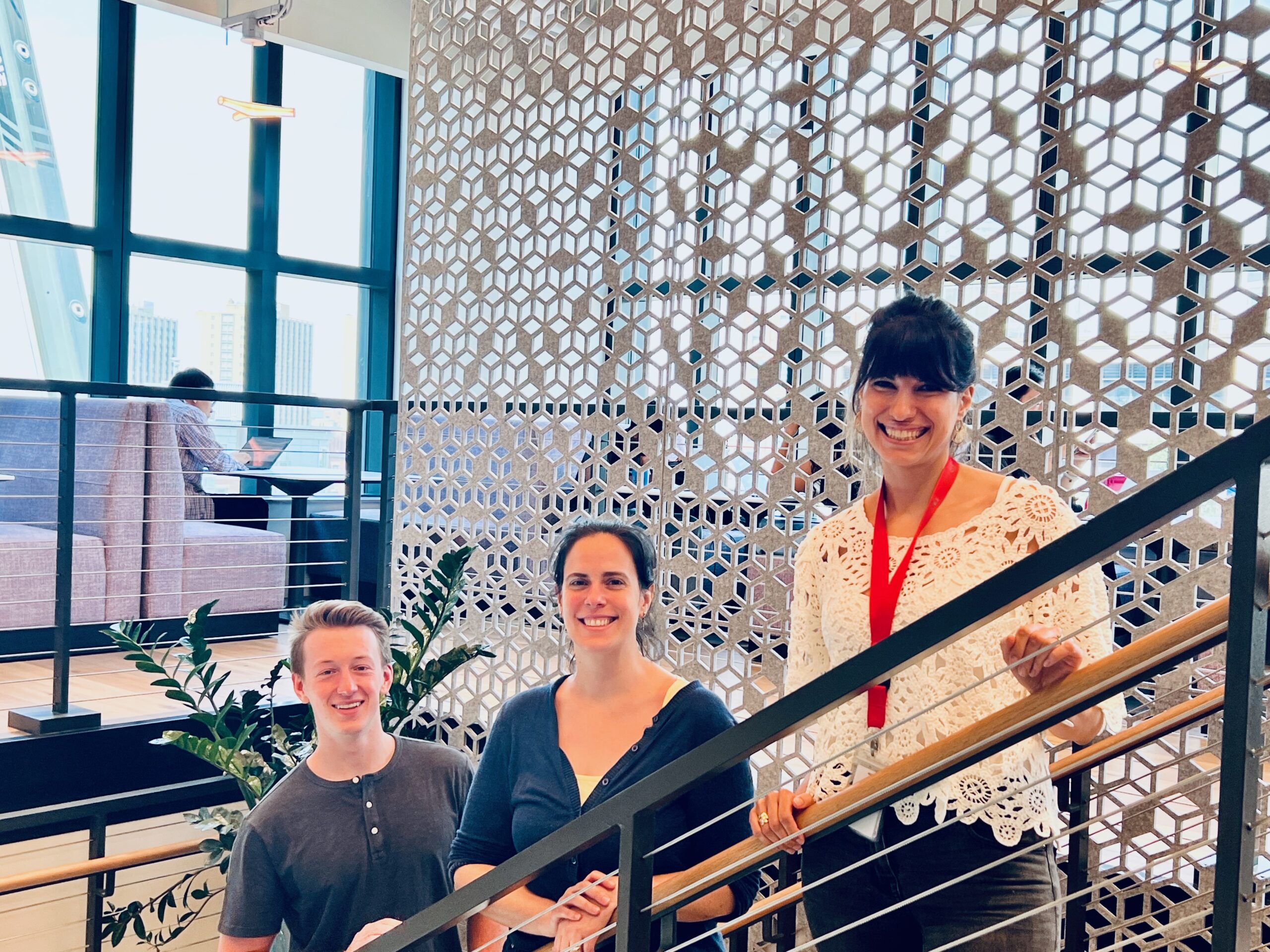
ReConstruct founder and CEO Luba Perry with Gozde Basara and Daniel Ludwiszewski at the Wyss Institute. Image courtesy of 3DPrint.com.
Perry’s journey with ReConstruct Bio is not just about science; it’s also about her mission to address the unmet needs of breast cancer survivors.
“When I spoke with patients, it became clear to me that this is our first indication. And for me, that was it. That’s when I knew I didn’t want this to be or to do anything else,” Perry explained. Her passion for the project is tangible, driven by a desire to provide women with a reconstruction option that is both safe and effective — a solution that is both emotionally and physically healing.
One of the most exciting aspects of ReConstruct’s technology is its potential to revolutionize breast reconstruction by eliminating the need for complex and invasive surgeries. Instead, ReConstruct’s approach uses a minimally invasive liposuction procedure to harvest fat, which is then bioprinted into vascularized tissue ready for implantation.
“The implications of this technology extend beyond breast reconstruction. The same principles could be applied to other reconstructive surgeries and even organ transplantation,” says Perry. “The ability to create living, vascularized tissue from a patient’s own cells opens up new possibilities in personalized medicine.”
ReConstruct Bio could have a significant impact on the lives of breast cancer survivors, offering them a safer, more natural option for reconstruction. As the company moves towards large animal studies and clinical trials, Perry remains focused on finding the right partners and investors to bring this life-changing technology to market.
For those interested in supporting ReConstruct’s mission, Perry encourages them to reach out and become part of a journey that could redefine breast reconstruction and, ultimately, improve the quality of life for millions of women worldwide.
Subscribe to Our Email Newsletter
Stay up-to-date on all the latest news from the 3D printing industry and receive information and offers from third party vendors.
Print Services
Upload your 3D Models and get them printed quickly and efficiently.
You May Also Like
3D Printed Flowers Light Up Jersey Zoo in Tribute to Conservation Pioneer Gerald Durrell
This summer, Jersey Zoo is home to more than just rare animals; it’s also hosting one of the most visually stunning installations this year: Bloom. This glowing field of 3D...
Polymaker Unveils HT-PLA & HT-PLA-GF Line of 3D Printing Filaments
Today, Polymaker has launched a new line of HT-PLA & HT-PLA-GF filaments. These enhanced PLA versions increase the glass transition temperature of PLA from a normal 60°C to above 130°C....
APES Unveils Vision for 3D Printed Electronics Factory
Advanced Printed Electronic Solutions (APES) is a systems integrator, 3D printing service, and consultancy partner for additively manufactured electronics. 3D printed electronics machines have been around, but a truly scalable,...
Flashforge AD5X Review: Multicolor TPU 3D Printing Made Simple
Disclosure:The AD5X was provided to me by Flashforge free of charge for the purpose of this review. I have not received any additional compensation. All opinions expressed are my own,...














